Listen to this article through the NOW! Bali Podcast:
Available On:
iTunes • Spotify • Google Podcasts • Pocket Casts • Radio Public
From the gurgling mountain spring to the churning sea, water has many parts to play in Bali. It is a revered element incumbent in everyday life, at least for the Balinese Hindu, who are said to even take its form as they move through the cycles of reincarnation. In life and in death, in heaven and on Earth, this symbol of purity is constantly present.
As such, the significance of water in Bali cannot be understated. In this article we seek to illustrate the many ways in which water is part of life on the island and why it is such a central element in Balinese belief.
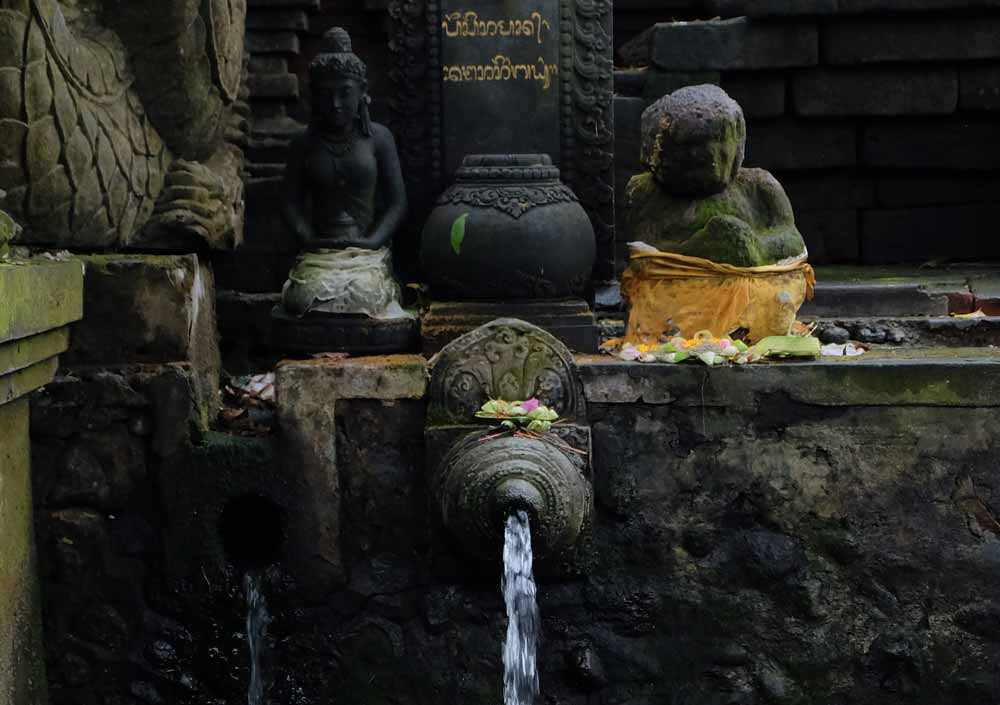
Agama Tirta: Religion of Holy Water
The Balinese form of Hinduism is quite distinct from what is practiced in India. It is something that evolved over time: it has animist roots, stemming from the island’s predominantly agrarian society. Fertility is of utmost importance for farmers, it gives sustenance, health and comfort. Water, as the central element of fertility, is therefore the giver of life. It must be revered — and so it is.
Worship was thus done to ensure fertility, among other wishes, and this continued even when a Hindu cosmology was ‘superimposed’ upon the existing animist and ancestral beliefs, an import from the invading Javanese Majapahit Kingdom in the 14th Century. The result is an amalgamation of the adat, the culture and rites that existed prior, and the Hindu philosophies. A fusion of local practices and universal beliefs. Yet, this was no formalised religion, rather it was a way of life. “They did not regard it as a bounded field demarcated from other aspects of their life,” says Michel Picard (2011). Prior to being termed Agama Hindu Bali, this bespoke belief system was called Agama Tirta, ‘the religion of holy water’, because of how prevalent and important holy water is to its believers.
Making Tirtha
Holy water in Bali is called toya or tirtha, depending on whether ‘medium’ or ‘high’ Balinese is used, respectively. Importantly, holy water is not symbolic, it is considered a powerful agent: “It is a sekala container of a niskala power,” explains Fred B Eiseman. Jr, meaning it is a physical medium for something unseen, something sacred and divine.
It is used in all religious affairs, small to large, personal to universal, and there are many types of holy water depending on where it comes from and what it will be used for.
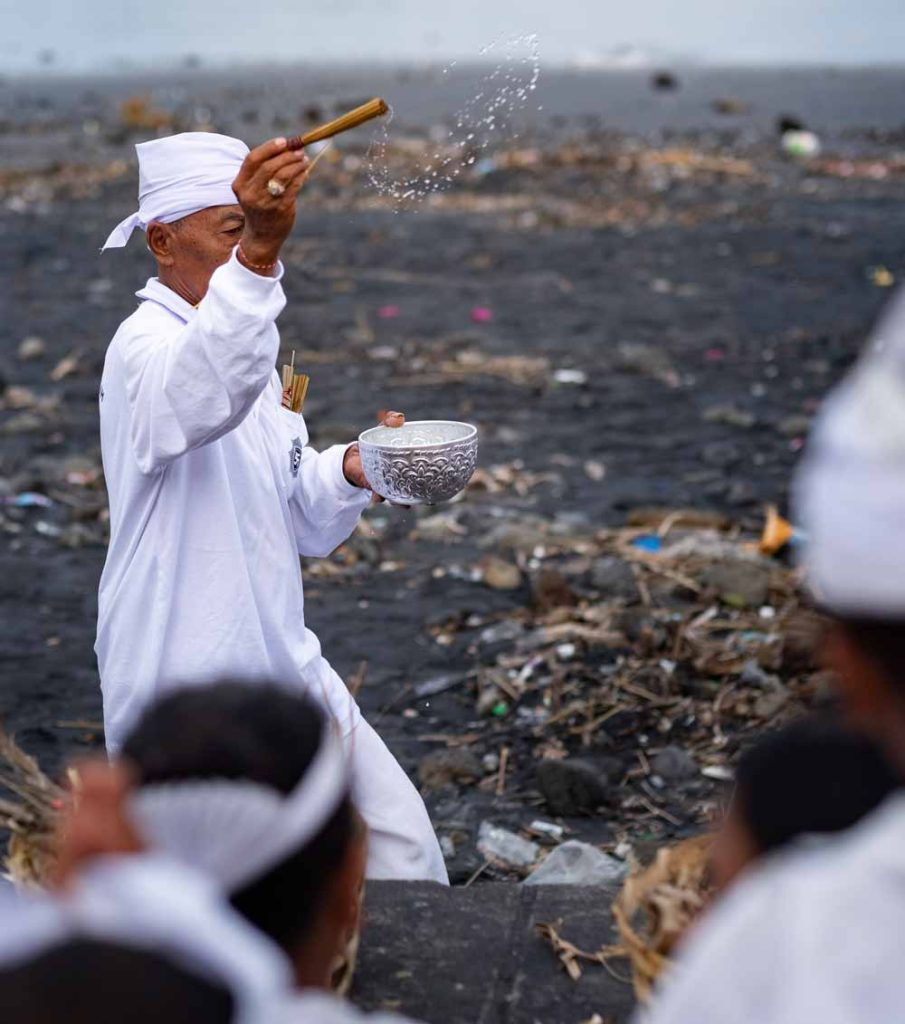
Through a process called maweda, holy water can be made by three people: the pemangku (lay priest), the pedanda (high priest), and also the dalang (puppet master). Normally a pemangku will prepare holy water at the temple for which they are assigned, made for the visiting worshippers to use during prayers or to collect to bring home. As specific temples worship specific gods or deities, the holy water from that temple may be sought out for a specific purpose.
Normally the pedanda high priests, privy to special mantras and mudras (hand gestures), will create more powerful tirtha, made for special ceremonies and the manusa yadnya, rites of passage, like the otonan (Balinese ‘birthday’) or metatah (tooth filing), pengabenan (cremation). The pedanda will make tirtha for panglukatan pabersihan, the cleansing ‘melukat’ ceremony, or pemelaspas for house blessings, among many other utilities. The dalang’s holy water is of a special kind, created during a wayang performance and is used often to exorcise or cleanse someone from illness, curses or bad fortunes.
In history, the priests themselves would travel to distant sources to collect holy water, to lakes and mountaintops. Sources can be unique, such as at Pura Luhur Lempuyang, where one can retrieve the holy water held inside bamboo chutes. “Pilgrimages to sacred places with corresponding holy water, or metirta yatra, is one of the duties of religious Balinese,” explains Jean Couteau. “Most temples have their specific petirtan or pura beji (temples with holy wells). This water itself has to be ‘asked’ from Wisnu as the Lord of water, and Dewi Danu as the goddess of the lakes.” Today, with the ease of travel, many Balinese will go themselves to seek out holy water directly from a specific source.
To Be Purified
Holy water is used in religious affairs large and small. It is used at home, offices, farms for offerings; it is sprinkled, sprayed and drank at prayers at the temple; and it is used abundantly in larger ceremonies from odalan to otonan.
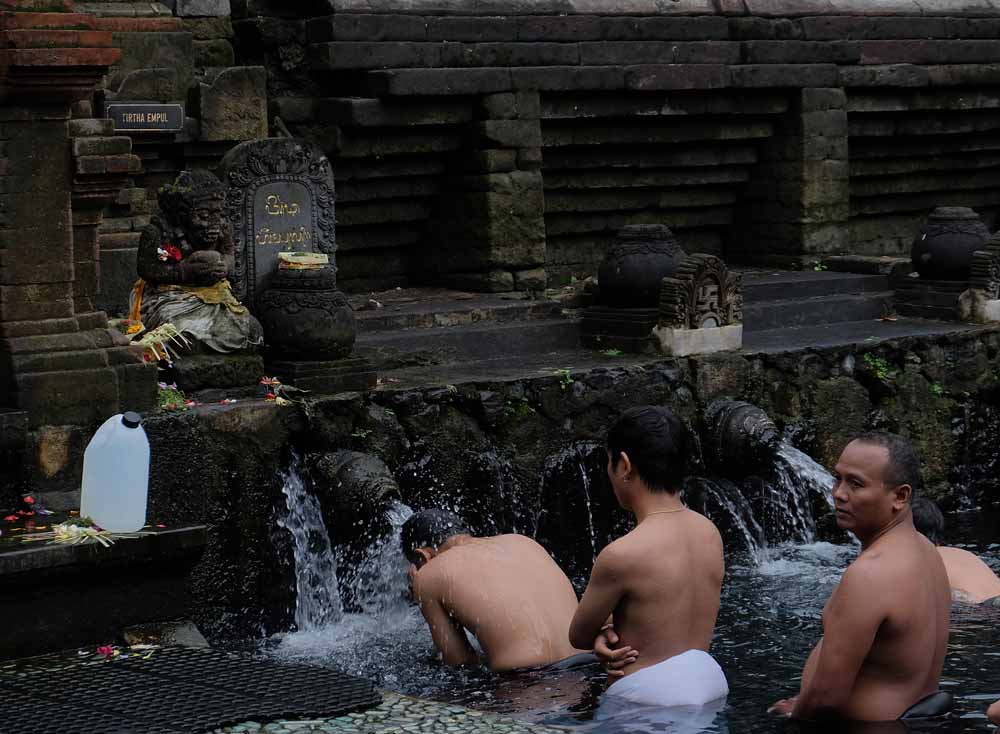
Two ceremonies in particular are centred on the cleansing nature of water. The melukat ceremony is a personal purification, often held at a holy spring temple or pura beji temple. Worshippers will come to pray and then bathe in a series of fountains to cleanse mind, body and spirit — it is a purification of one’s negative aspects. The most famous site for this is Tirta Empul in Tampak Siring, where a natural spring is said to have been made by Lord Indra himself, but there are many sites for melukat around the island.
Another important ceremony is melasti. It is another cleansing ceremony but for important sacred or holy artefacts and effigies. They are brought out of temples and storage to be cleansed in nearby bodies of water, most commonly to the sea, where they are ritually cleansed at the end of the Saka calendar year.
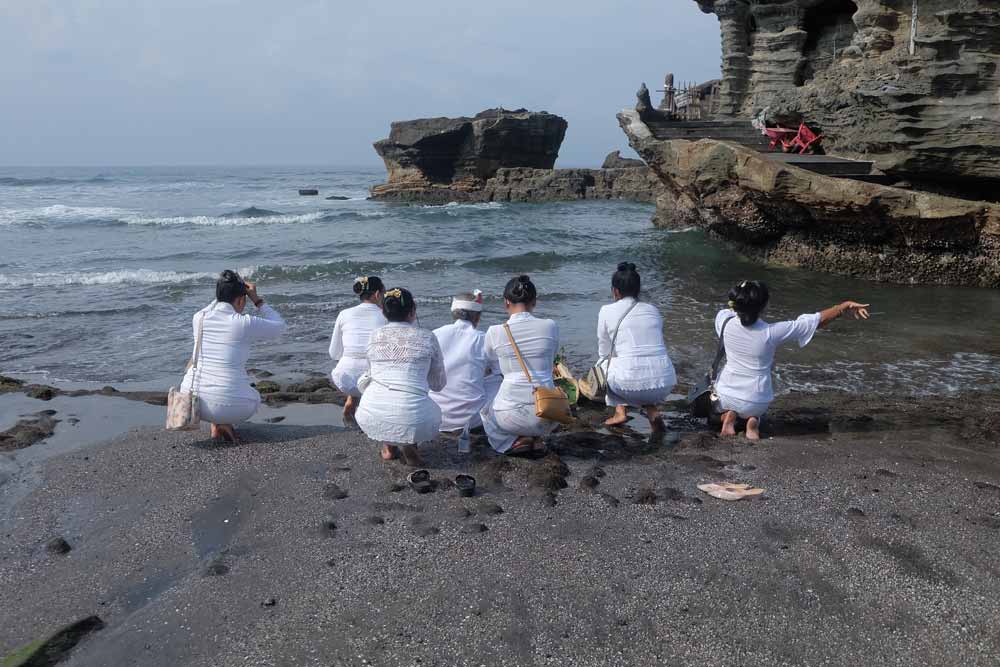
Those familiar with the Balinese belief system may be asking, if kaja (north, towards the mountain) is considered the holy direction, then isn’t its opposite, kelod (towards the sea), unholy? Not at all, the sea is equally holy, it is where the gods created ‘amerta’ the elixir of life and immortality. There are many important sea temples, such as Pura Tanah Lot and Pura Luhur Uluwatu. One can collect holy water from the sea as well, called, tirta segara.
Such purification ceremonies are done to cleanse two important factors: the Bhuana Alit (microcosm, found within the human) and the Bhuana Agung (the macrocosm, the universe, external to humans).
Blessed Bodies of Water
Holy springs are important sites, as are Bali’s many lakes, all of which feature important temples dedicated to Dewi Danu and Wisnu. Before any science would corroborate it, the ancient Balinese understood that these bodies of water feed the rivers and groundwater across Bali, which in turn keep their lands fertile.
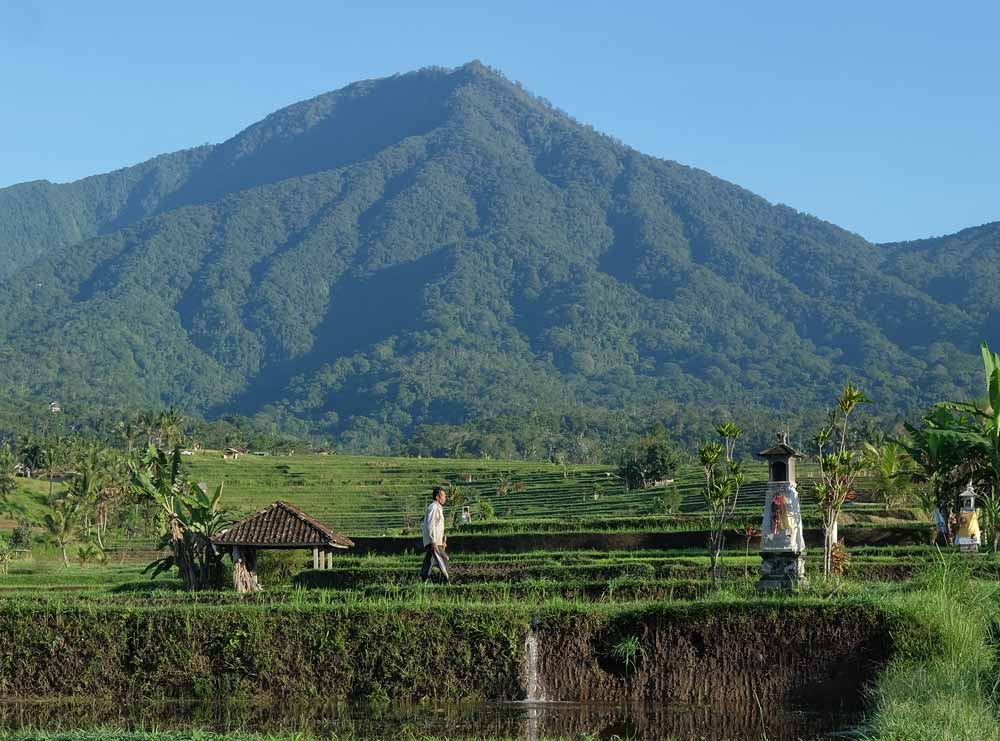
Transcending mere religious events, holy water runs through the entire landscape of Bali. This is thanks to the intricate water-sharing system of the island’s rice farmers, known as subak. On its journey from mountain lakes and springs down to the sea, water is continuously blessed and revered, siphoned from rivers into a complex network of temples, weirs and terraced plots, before being reverted back into its main channel down to the ocean.
There are sixteen different rituals that must be conducted by each subak organisation, with the ultimate goal of ensuring fertility of the rice crop. These are offerings devoted to Wisnu, Dewi Sri and Dewi Danu and the farmers will worship at the many levels of the water’s journey: an annual pilgrimage to the lake temples; seasonal prayers at the pura ulun swi, found at the original dam, when water was first diverted out of the main water source; and daily sprinkles of water at the sanggah catu and pura bedugul shrines at the farm-level.
Balinese Hinduism has tried to shake off its animist past since it was officially regarded as a ‘religion’, but these roots and the fertility rituals continue to this day, justified with the addition of Hindu cosmology. One could argue that these rituals give reverence to the lakes, rivers, springs and seas of the island; they give them a life of their own, a magical and spiritual essence that elevates nature above banality. As a Tibetan proverb says: “If there is veneration even a dog’s tooth gives forth light.”
In Life, In Death
All we have discussed is water’s place in the sekala, or seen, world. However the theme of water continues even after one has passed from this earthly realm.
Jean Couteau explains: “Death rites do not end with the world-famous Balinese cremation. They are complete only when the soul has been definitively separated from its earthly envelope and delivered to its place of origin, above the mountain (tanah ane ayah). On completion of the rites, the dead are said ‘to have become water’ (suba dadi yeh).”
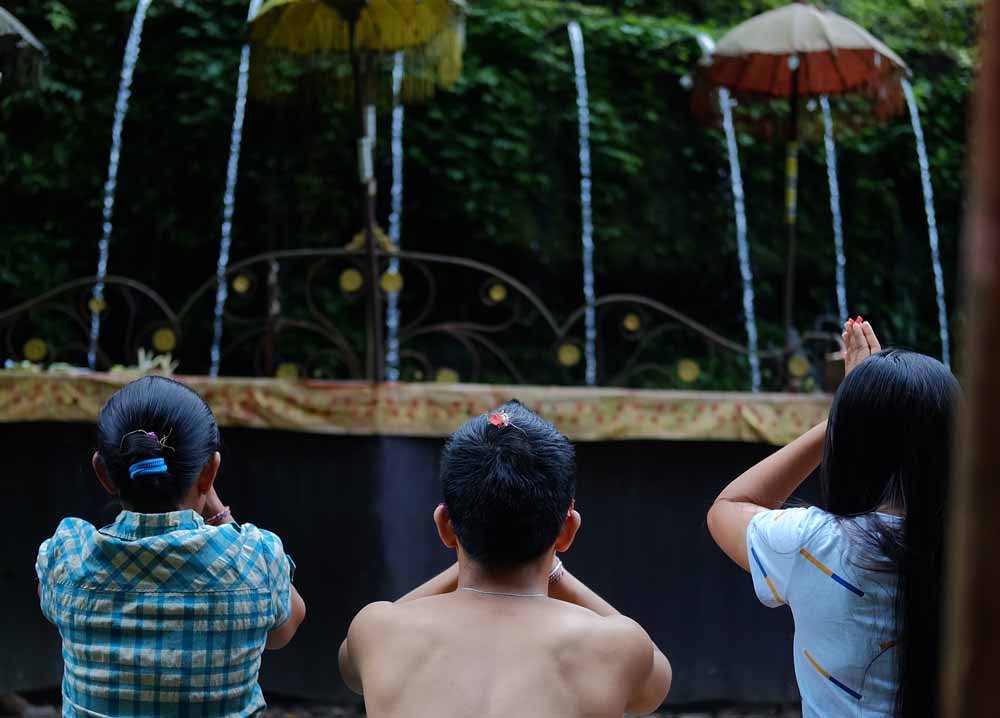
Reincarnation sees the ancestors come down from their abode above the mountain as a ‘drop of water’, or titisan, to give life new life, continuing samsara, the cycle of life. Even then, when a baby is successfully conceived, it is surrounded by water in the womb; and when it is born until it dies its life is consumed by ceremonies with holy water.
So, in life and in death, in heaven and on Earth, water remains present. The Balinese Hindu constantly on the search for holy water, revering it, purifying and cleansing with it. To preserve this water, from the mountain to the sea, to ensure it is accessible, clean, unpolluted, is therefore of utmost importance across the island.







